Starbucks is making lots of headlines with the opening of its first retail store in Colombia, a three-story shrine to the company and the country.
Many of the headlines say something to the effect of, “Starbucks now selling Colombia its own coffee.” Starbucks, meanwhile, is pitching the store — the first of approximately 50 that will be rolled out in the Colombian market over five years — as a 100-percent-local sourcing effort (Starbucks says it is the largest purchaser of Colombian premium arabica in the world).
(related: How to Design a Coffee Bar on a Train)
However you frame the company’s efforts in Colombia, it can’t be denied that its flagship store at Parque de la 93 in Bogota is making a big splash. Starbucks says the store’s design was inspired by hand-written order forms for the company’s first shipments of Colombian coffee for its newly opened first store in 1971 in Seattle’s Pike Place Market.
“There’s a rich history behind this piece of paper,” Bret Lewis, senior designer for Starbucks stores in Latin America, said in a company announcement yesterday. “It’s the story, in its simplest form, of our journey with Colombian coffee. When we set out to design this store, we wanted to reflect that coffee heritage through store design and create a truly elevated experience for our customers.”
The entry point of the store includes a landscaped terrace with seating along the walls and a large opening to the first floor main bar.
(related: These Are Some of the Best Coffee Bar Designs in All of Australia)
Architects often like to talk about single iconic elements for a given project, and here that is a six-meter (19.6-foot) brown and gold mural of the Starbucks siren. Starbucks says the mural depicts the siren underwater, celebrating the first shipments of Colombian coffee to the United States as a large ship passes over her. (The irony here is that the underwater Siren in Greek Mythology is a dangerous creature that enchants sailors to shipwrecks, but perhaps we’re being too literal.)
The shop’s second level includes another coffee bar — this one less characteristic of the basic Starbucks retail experience — that includes one-on-one interactions with baristas who discuss sourcing, blending, roasting, and various brew methods including Chemex pour overs and French Press. Behind the upstairs bar is a large screen capturing indigenous art that was designed in collaboration with Colombian industrial designer Ana Reza-Hadden. A third floor provides more quiet sitting and sipping areas with a park, facing, floor-to-ceiling window framed by two living walls with native plants.
Each floor features artwork and locally sourced materials that not only visually define the space, but also connect Starbucks an idealized story of Colombian coffee. “We looked at every detail to make (sic) this store is locally relevant and tells a cohesive story,” said Lewis.
Nick Brown
Nick Brown is the editor of Daily Coffee News by Roast Magazine.
Comment
1 Comment
Comments are closed.



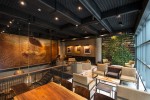
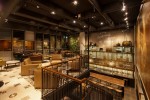
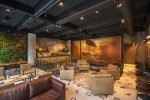


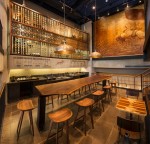
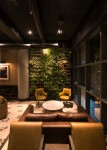





I never understood the American fascination with their own commodity services exported to foreign countries.